Satellite images provide a sickening view of Australian fires from space
The fires ravaging Australia’s east coast are visible from space, with smoke billowing hundreds of kilometres across the Pacific Ocean.
Startling satellite images show the fires currently ravaging Australia’s east coast are clearly visible from space, with smoke billowing hundreds of kilometres across the Pacific Ocean.
As of 7pm on Saturday, three people are dead, five are missing, 30 people are injured and more than 150 homes have been destroyed by the wild fires razing Australia’s drought-stricken east coast.
Timelapse imagery shared by meteorologist and scientist Dakota Smith on Twitter shows the path of the fires growing, and smoke pouring out across the ocean:
Explosive wildfire growth with giant smoke plumes.
— Dakota Smith (@weatherdak) November 8, 2019
Insane imagery of Australia's east coast today. pic.twitter.com/yFTuEQkOYv
Here’s another view of the fires’ progression yesterday, tweeted by Deputy Commissioner — Executive Director Operations for the NSW Rural Fire Service:
Progression of major fires today across NSW #NSWfires pic.twitter.com/KAZ3pW9i8O
— Rob Rogers (@robrfs) November 8, 2019
NASA’s Worldview online tool shows how the fires have grown in the past few days — here’s the view on November 6:
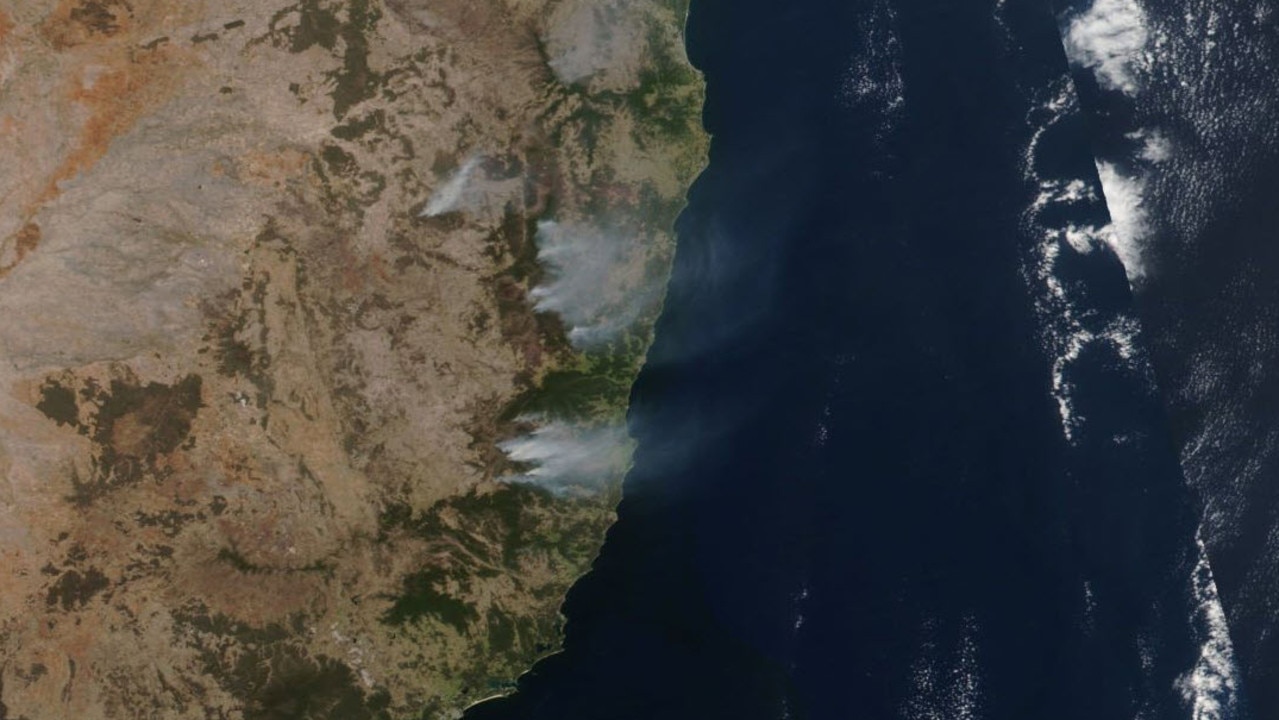
And November 7:
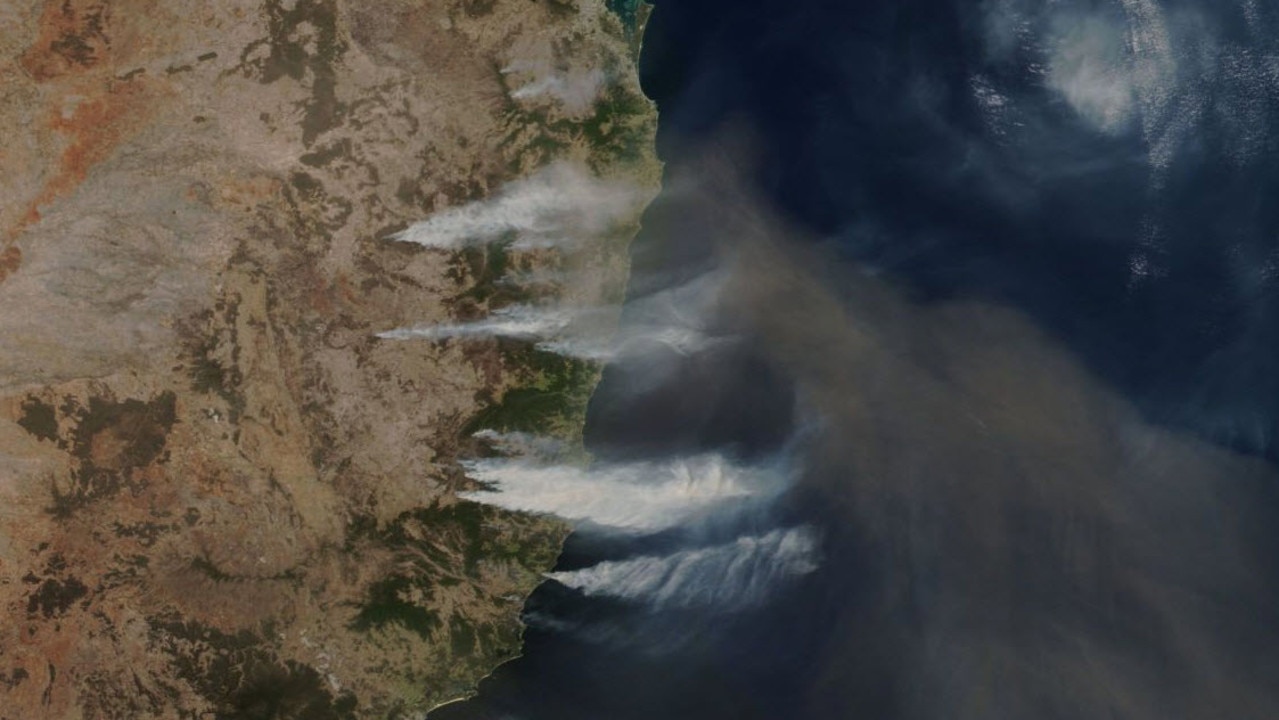
And the most recent imagery available, from November 8:
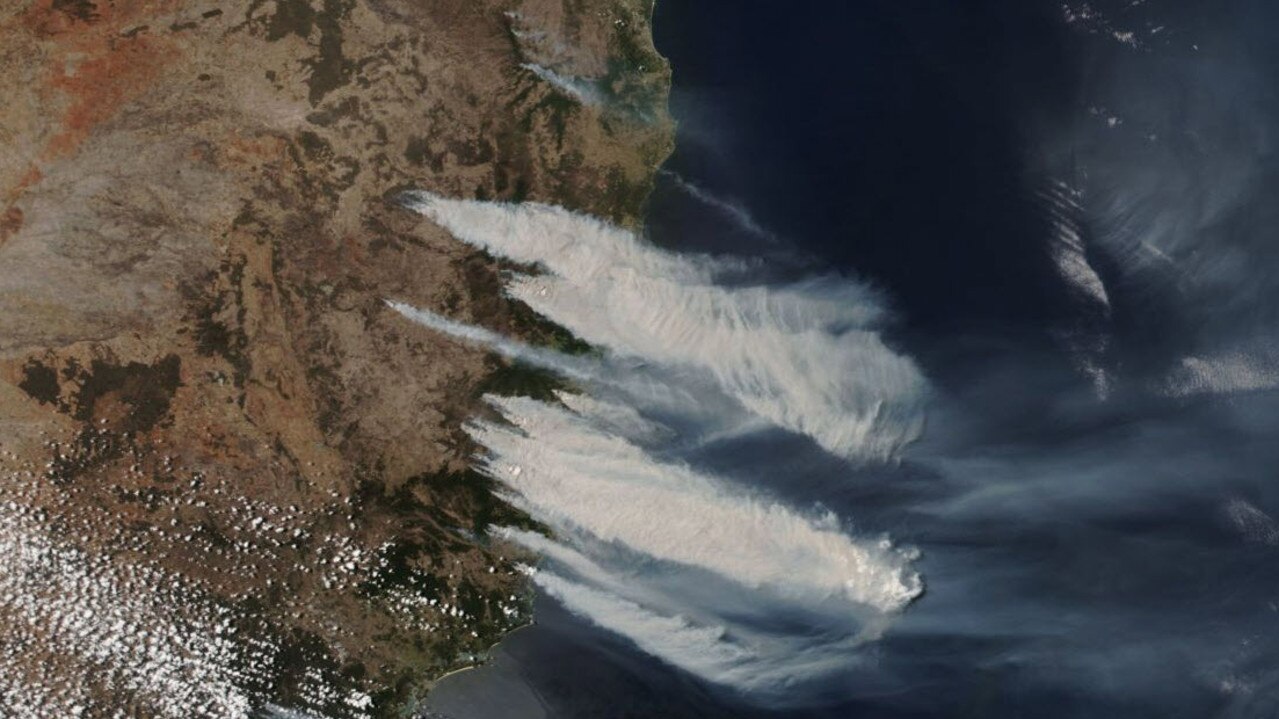
This wider view, from the Australian Government’s Burea of Meteorology, shows the smoke from the fires at Saturday November 9, extending even further across the Pacific:
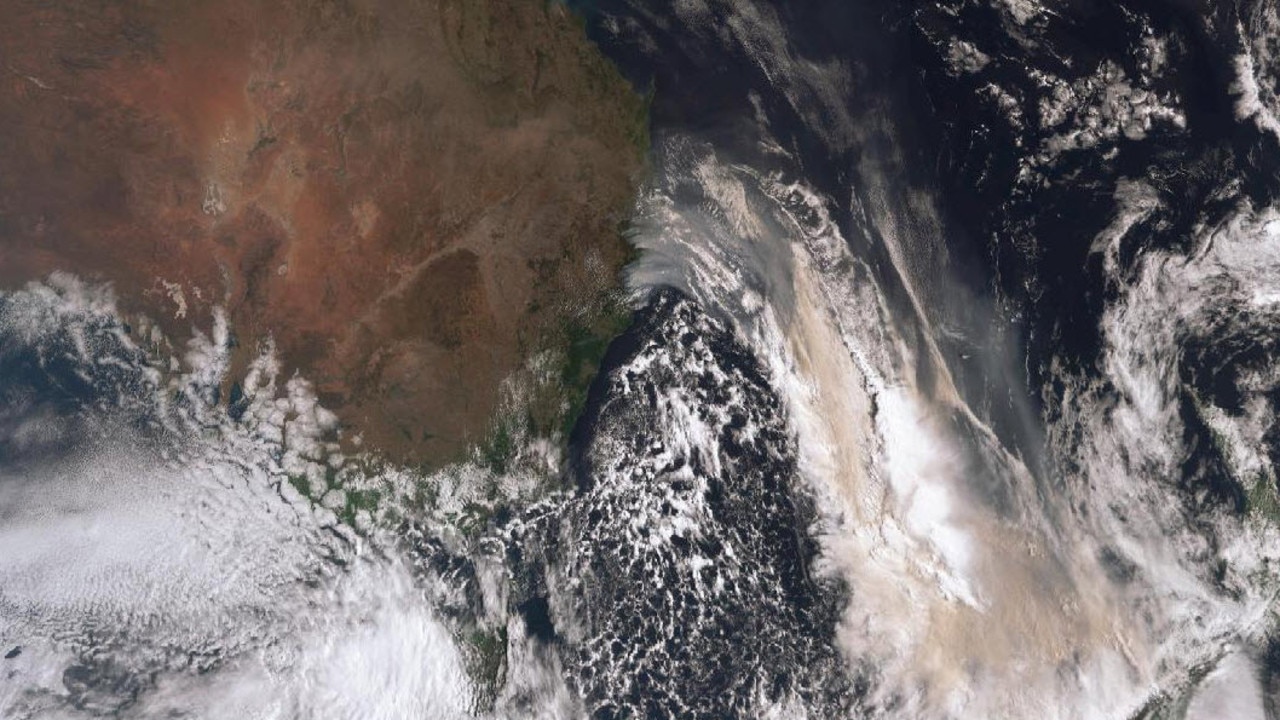
Firefighters had warned they were in “uncharted territory” as they struggled to contain dozens of blazes from suburban Brisbane to the far outskirts of Sydney.
“At this stage, it appears at least 100 homes have been destroyed in yesterday’s bush fires,” New South Wales fire service said in an update early Saturday.
#SuomiNPP captured this image today of dramatic smoke from bush fires in New South Wales, Australia. These fires are introducing large amounts of smoke particles into the atmosphere, as seen in the 2nd S-NPP image. According to @NSWRFS, 45 of the 82 fires are not yet contained. pic.twitter.com/LeRvqrv9Az
— Joint Polar Satellite System (JPSS) (@JPSSProgram) November 8, 2019
About 1200 firefighters and 70 aircraft were deployed across a roughly 1,000-kilometre stretch of the seaboard.
“We have never seen this many fires concurrently at emergency warning level,” New South Wales Rural Fire Service Commissioner Shane Fitzsimmons said Friday. “We are in uncharted territory.”
This is a dramatic start to what scientists predict will be a tough fire season ahead, with climate change and unfavourable weather cycles helping create a tinderbox of strong winds, low humidity and high temperatures.
If that’s what the fires look like from up here on the NSW Mid Nth Coast, huge prayers and thoughts for those down there! 🙠@NSWRFS @7NewsSydney pic.twitter.com/AlgiOgAHQI
— Matt Hope (@MattHope4) November 8, 2019
While conditions eased markedly in some areas and the forecast was downgraded from “extreme” to “high” or “very high” Saturday, a total fire ban remained in place in many areas and further high winds were predicted.
Firefighters had described the conditions Friday as “difficult” and “dangerous”. “Unfortunately, many people have called for help but due to the size and speed of the fires we couldn’t get to everyone, even by road or helicopter,” New South Wales firefighters said.
In some areas, residents were stuck and told to simply “seek shelter as it is too late to leave”.
Local radio stopped normal programming and provided instructions about how to try to survive fires if trapped at home or in a vehicle.
‘VOLATILE AND DANGEROUS’
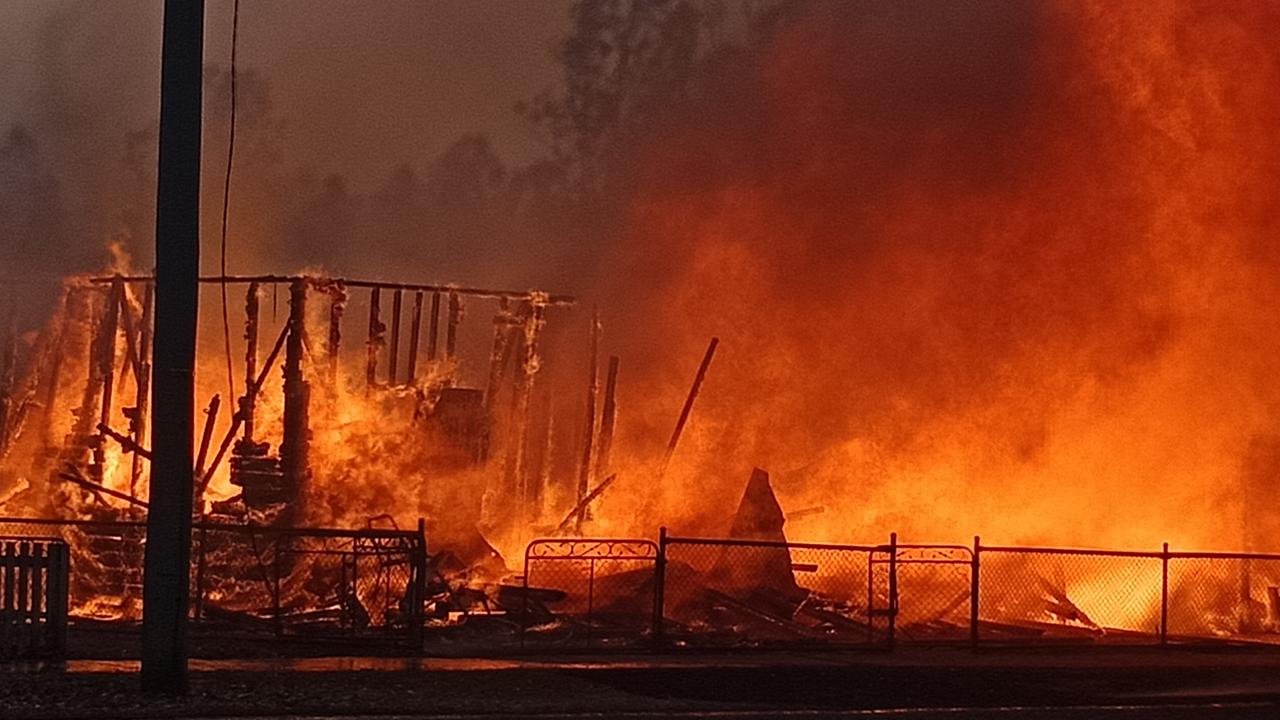
Across the central coast, residents took to social media to post photos and videos of smoke-laden tangerine skies and flames engulfing storeys-tall eucalypts within sight of their homes.
Authorities said some of the fires were creating their own weather conditions: pyrocumulus clouds that enveloped entire towns.
Meanwhile, high winds flung embers and burnt debris far ahead of the fires’ front lines, depositing the dangerous detritus on the balconies and front yards of unsuspecting residents.
Firefighters moved from spot to spot trying to put out small fires caused by the falling debris.
Despite easing conditions, a prolonged drought and low humidity levels will continue to make circumstances combustible.
Earlier this month some of the same fires cloaked Sydney in hazardous smoke for days, giving the city a higher concentration of particles per million than cities like Bangkok, Jakarta or Hong Kong.
That prompted health authorities to warn Sydneysiders with respiratory problems to avoid outdoor physical activity.
Swathes of Australia have gone months without adequate rainfall, forcing farmers to truck in water at exorbitant cost, sell off livestock or leave their land to lay fallow.
On Wednesday, Australia’s government announced a package of low-cost loans worth around one billion Australian dollars, designed to help drought-stricken farmers struggling with the latest “big dry”.



